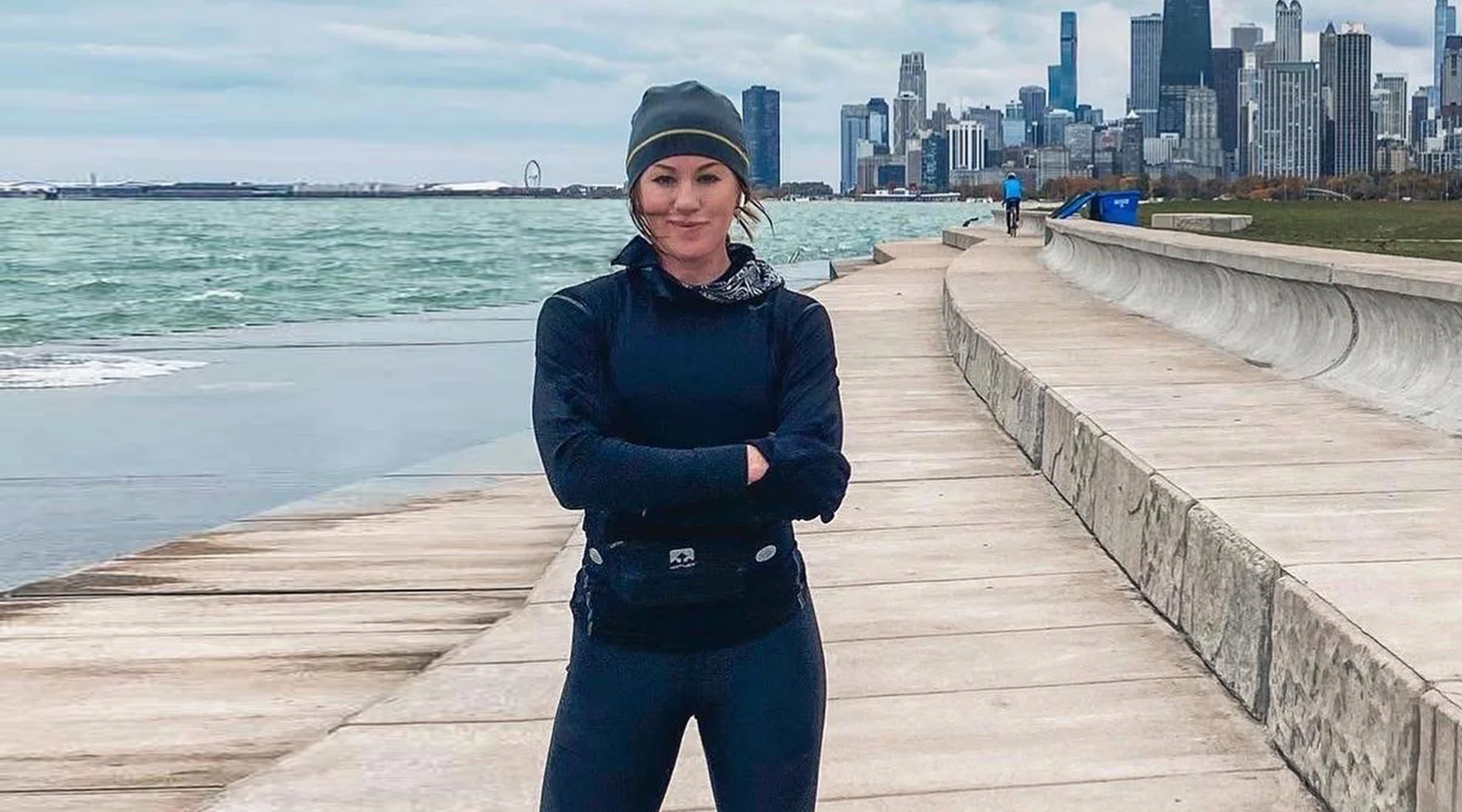Topics
- Article
- Running
12 Tips & Benefits to Running in Cold Weather

Coach Meg Takacs shares her strategies and advice for winter running.
I’d like to give a shoutout to the runners putting their best stride forward during these colder months. It’s not easy, but you already knew that. As the temperature drops, so can our motivation, and some of us even question if it’s safe to run in the cold. But before you jump to any conclusions and hit the treadmill instead of heading outside (or avoid running all together), let me present to you some good news–there are ways to make it more comfortable and even acclimate to running in winter weather. After all, the long run is all about coping strategies. If you think about it, feeling cold is essentially just a different type of pain, which makes you wonder, “Is it mental or physical?” Running in the cold isn’t impossible, it’s just not ideal. It requires both physical and mental strength. And with the chilliest months still underway, there’s no better time to be prepared than now. You know that stiffness in your stride cycle, the nose drip, and that freezing feeling in your lungs? That’s all happening because it’s cold. And while I wish there were a way to change the weather, there isn’t. Running in the cold affects everyone differently. How our bodies adapt to it is a matter of preparation, acclimation and practice. Luckily, I have several tips to help you do that.
Cold Weather Effects on Lungs
Our lungs don’t like running in the cold. That’s a fact. When cold air is breathed in, our lungs humidify it, warming it up so it can circulate more easily throughout the rest of our body. And as you can imagine, this process is more demanding on our respiratory systems when the temperature is at 32 instead of 62 degrees. The colder the air, the narrower our pathways become, yet our lungs are still required to continue to heat it up and circulate it. This process is what can cause that irritating, freezing feeling in your chest while running.
Tips for Winter Running
One thing you can do to prepare your lungs for the cold is an indoor, dynamic warm-up prior to your run. Warming up (literally) will not only increase your muscle tissues’ temperature, but it will also reduce the effects of cold air on your lungs. Another tip is to wear a mask. I know. We’re all tired of hearing it, but it’s not for pandemic related reasons, it’s because a mask or scarf can actually trap moisture and humidify the air more effectively than directly breathing in cold air. An additional tip is to try breathing through your nose periodically instead of only through your mouth. Your nose’s pathway humidifies air more effectively than your mouth does. And finally, start your winter training at the warmest points of the day (afternoon) if you can so you can acclimate your body and lungs before the temperatures really drop. Although your heart rate may be higher on your runs after having made some of these adjustments, you can monitor it with WHOOP and track how your body acclimates over time. It’s like running in higher elevations–the more you do it, the easier it gets. READ MORE: Why is My Heart Rate High on Easy Runs?
Heart Rate in Colder Weather
When the temperature drops, our blood vessels narrow which causes an increase in blood pressure and results in an elevated heart rate. And as WHOOP shows us, a higher heart rate leads to higher strain. This is why your perceived effort at your “normal” pace in the cold may feel more difficult than it does in warmer temperatures. So how do we combat this? There’s evidence that a particular type of fatty tissue, known as “brown fat,” may help the body generate heat in response to persistently cold conditions. “Chronic cold exposure somehow activates brown fat, which we know undergoes dramatic seasonal changes,” says Shingo Kajimura, a professor in the Department of Cell and Tissue Biology at the University of California, San Francisco. The not-so-great news is that in order to develop more brown fat, you have to have repeated exposure to the cold. Where there is consistency, there is acclimation. You have to practice running in the cold, and not just once a week. You can also acclimate your body to the cold by increasing your amino acids intake from sports drinks, or in raw form, from foods like eggs and fish. Another (less favorable) option is to take a few 10-15 minute cold showers each week. I know, not fun. One last thing to note–when you run in the cold, your body uses your glycogen storages (stored energy in the form of carbs) more quickly than it does when you run in warmer temperatures. Bringing gels or chews along with you on your run can help you replenish these storages before they run out. Stock up on carbs 24 hours before the run, and replenish your carbs before you're empty (every 30-40 minutes of your run).
Fighting Depression
Running in the cold requires you to get outside your comfort zone. And I hate to say it, but there’s a lot of opportunity in getting comfortable with being uncomfortable. When your body prepares you for hard work, like running, it releases endorphins. So while it may not feel great running in the cold, that post-endorphin high can be exactly what your body needs to keep you coming back from more. As you run, the body releases norepinephrine, a chemical that moderates your brain’s response to stress. It increases your sense of well-being by pumping endorphins into your body’s system. If you’re consistent about running in the cold, it can help you eventually think less about the temperature, and more about how awesome you’re going to feel afterward. With the conversation around mental health becoming more prevalent as we continue on through this pandemic, I can’t stress enough how important it is to take care of your body and mind. The cold weather doesn’t help you do this, but running does. Running with resilience can change the way you think about the sport. Endurance is all about your ability to “endure.” No matter how fast or slow you run, the only trait all consistent runners have in common is their ability to hang out in the pain cave just a little bit longer than they previously thought.

A good night's sleep helps Meg better prepare for her cold-weather runs.
Sleep Performance and Recovery Matter
If you’re running in the cold, make sure it’s after a good night’s sleep. The correlation between rest and recovery undoubtedly affects performance in every single way–even more so when preparing to run in colder temperatures. I would highly recommend using WHOOP to track your sleep progress so you know which days your body is primed for a high strain. The more prepared you are to handle a workout, the stronger your performance, and recovery afterward, will be. For instance, when your body is recovered, your reaction time while running is quicker (easier to avoid falling on ice patches and to navigate wind or other cold weather conditions), your risk of getting sick is lower, and you won’t exhaust as easily (run longer but with less effort). As far as post-run recovery, you’re going to want to fuel up afterward (between 100-300g of carbs) which will aid your body in its ability to recover. I would also recommend foam rolling after you run so that you can avoid DOMS (delayed onset muscle soreness). Having a strong recovery means you won’t be as sore, which means you’ll be more inclined to keep up the momentum to get outside in those colder temperatures again. No one likes being cold, but running on sore muscles in the cold can make it much worse. MORE FROM COACH MEG: How Often Should You Run? How to Prevent Common Running Injuries And check out runwithmeg.com.